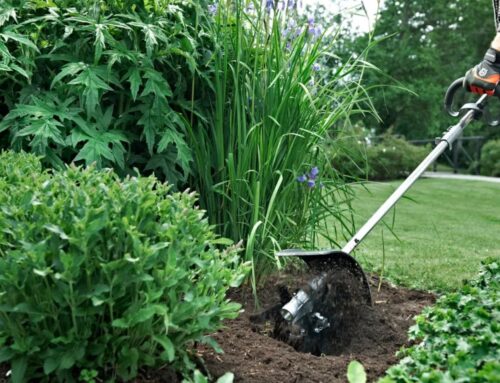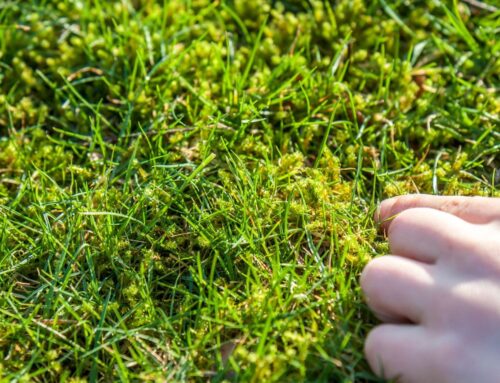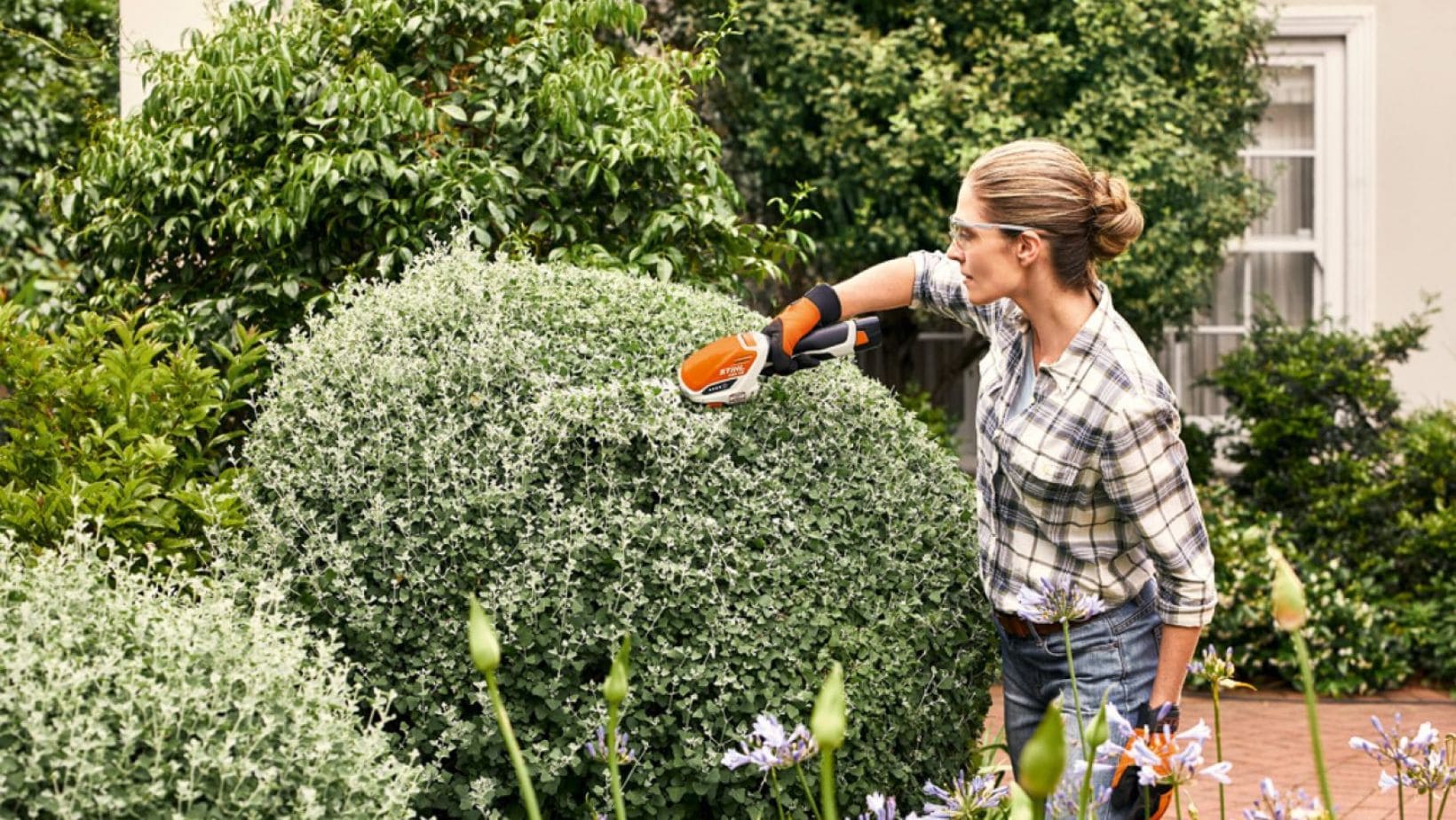
Our Beginner’s Guide to Pruning and Cutting Back Shrubs
Maintaining a flourishing garden doesn’t just involve planting the right shrubs—it’s about knowing when and how to prune or cut them back. Timing is everything because getting it wrong can mean fewer flowers, stunted growth, or even long-term damage to your plants.
In this blog, we begin by clarifying the difference between pruning and cutting back. We then explain why you need to treat evergreen and deciduous shrubs differently, before turning our attention to some of the most popular varieties of shrubs found in British gardens. So, if you want to know the difference between a light prune and hard cut back, when can I cut back hydrangeas, or when should you prune bushes, please read on…
 Pruning vs Cutting Back: What’s the Difference?
Pruning vs Cutting Back: What’s the Difference?
While pruning and cutting back are often used as interchangeable terms, they serve different purposes within the garden. Pruning is a selective and deliberate process, usually carried out to remove diseased, damaged or dead parts of a plant. It’s also done to stimulate better flowering or fruiting by encouraging healthy new growth. Therefore, the answer of when to prune bushes and shrubs is often dictated by the plant’s growth cycle and flowering habits.
Cutting back, on the other hand, tends to be more drastic and structural. It’s used to reduce size, control shape, or rejuvenate an overgrown plant. It’s also the technique used when to trim bushes back that have become woody or unruly.
Think of pruning as precision snipping, and cutting back as a seasonal haircut.
Evergreen vs Deciduous: Why Timing Matters
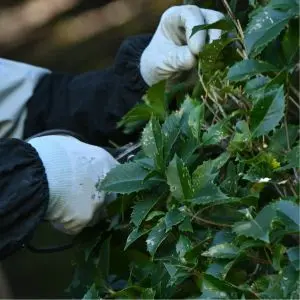 Understanding the type of shrub you’re dealing with—deciduous or evergreen—is essential before you reach for your shears. Evergreen shrubs like holly, yew, and boxwood retain their foliage all year round and don’t store food reserves in their roots. So, when to cut back bushes like these? The answer is in early spring, just as growth resumes but after the risk of frost has passed.
Understanding the type of shrub you’re dealing with—deciduous or evergreen—is essential before you reach for your shears. Evergreen shrubs like holly, yew, and boxwood retain their foliage all year round and don’t store food reserves in their roots. So, when to cut back bushes like these? The answer is in early spring, just as growth resumes but after the risk of frost has passed.
In contrast, deciduous shrubs lose their leaves over winter, conserving energy in their roots. This makes late winter to early spring the best time to cut them back, just before they start growing again. Cutting them at the wrong time—particularly in late summer—can rob them of the stored energy they need to regrow.
When to Cut Back Some Popular Shrubs
Let’s take a look at when you should cut back some of the most popular shrubs, all of which may well be growing in your garden…
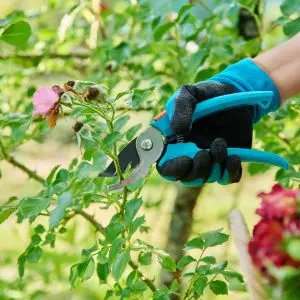 Roses: When Should You Cut Back Roses?
Roses: When Should You Cut Back Roses?
Roses demand a little extra attention, but get the timing right and you’ll be rewarded with a glorious summer show. When to prune rose bushes is usually in early spring, around the time new growth appears. These types of rose flower on new growth, so cutting them back hard encourages more prolific blooming and keeps them compact.
For climbing roses, prune in late winter, removing old or weak growth and training the strongest canes. Rambling roses, which bloom on old wood, should only be pruned after flowering in late summer.
So, if you’re wondering when should you cut back roses, always consider the rose type first.
Hydrangeas: When Can You Cut Back Hydrangeas?
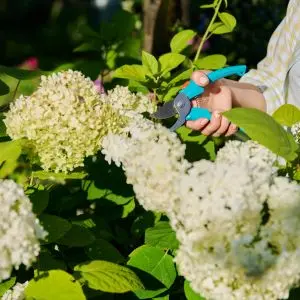 Although one of Britain’s most commonly grown shrubs, knowing when to prune hydrangeas properly depends on their variety. The key is whether they bloom on old wood or new.
Although one of Britain’s most commonly grown shrubs, knowing when to prune hydrangeas properly depends on their variety. The key is whether they bloom on old wood or new.
Mophead and Lacecap hydrangeas bloom on old wood. So, if want to know when do you cut back hydrangeas of this type, do so in late summer or early autumn after flowering. This gives them time to set buds for the following year.
Panicle and smooth hydrangeas, however, bloom on new wood. Therefore, the best time when you can trim hydrangeas like these is late winter or early spring, which will encourage vigorous new growth and blooms.
To summarise when to cut back hydrangeas, spring is generally the safest for new-wood bloomers, while old-wood types benefit from pruning post-bloom.
Lavender: When Do I Cut Back Lavender?
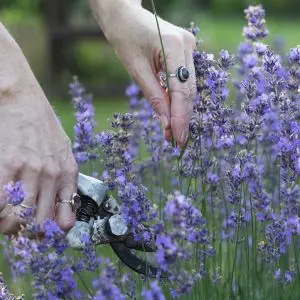 If you’ve ever ended up with leggy, woody lavender, it’s probably down to missed pruning. So, lavender when to cut back? With English lavender, the key time is late summer to early autumn, right after the flowers fade. This gives the plant a chance to put out fresh shoots before winter sets in.
If you’ve ever ended up with leggy, woody lavender, it’s probably down to missed pruning. So, lavender when to cut back? With English lavender, the key time is late summer to early autumn, right after the flowers fade. This gives the plant a chance to put out fresh shoots before winter sets in.
Avoid cutting back into old wood, as lavender rarely regrows from it. Instead, aim to leave a bit of green growth on each stem. You can also give it a light trim in spring to remove any frost-damaged tips.
French and Spanish lavenders bloom earlier than their English cousins and should be pruned after flowering in mid to late summer. Keep a close eye on the variety in your garden and adjust your timings accordingly.
So, if you’ve been wondering when do I cut back lavender, now you know—prune after flowering and never too hard.
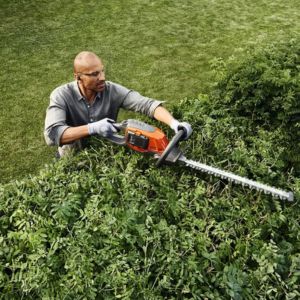 When to Trim Back Hedges and Trees
When to Trim Back Hedges and Trees
It’s important to know when to trim back trees and bushes correctly to avoid causing unnecessary stress or cutting off next season’s buds. In terms of exactly when should you prune hedges and trees, that depends on their type.
For most evergreen varieties, early spring is best. Deciduous species, on the other hand, can be pruned lightly in summer and more thoroughly in winter. For example, when to cut back fig trees is typically in late winter, when the tree is dormant. This encourages a strong structure and fruitful harvests.
Aside from its own health, another important consideration about when to cut back a hedge or tree is to do so either before birds’ nesting season or once they have flown.
Great Pruning Starts with the Right Tools
Even the most fastidious gardener is only as good as their tools. Whether you’re thinning a rose bush, cutting back a wayward hydrangea, or shaping an ornamental hedge, having the right equipment makes all the difference.
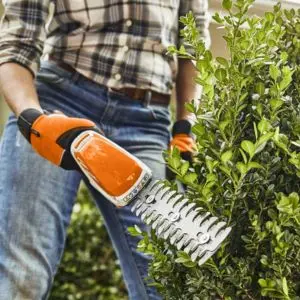 Here at Garden Machinery Direct, we’ve got all your pruning and cutting back needs covered. From premium hedge trimmers and pruning saws to secateurs and pruning shears, we sell all the right tools to help you make clean, strategic cuts that will keep your plants healthy and looking smart. What’s more, if you’re just getting started, our expert team are always on hand to help you choose the best equipment for the job.
Here at Garden Machinery Direct, we’ve got all your pruning and cutting back needs covered. From premium hedge trimmers and pruning saws to secateurs and pruning shears, we sell all the right tools to help you make clean, strategic cuts that will keep your plants healthy and looking smart. What’s more, if you’re just getting started, our expert team are always on hand to help you choose the best equipment for the job.
Final Thoughts on When Should You Prune Shrubs
We hope you’ve enjoyed reading our beginner’s guide to pruning and cutting back shrubs. Hopefully, the next time you find yourself wondering when to prune back bushes, or when can you trim hydrangeas, you’ll feel a lot more confident about making the right decision and carrying out the job.
Trust us, knowing the difference between pruning and cutting back, as well as understanding when to cut back shrubs, really will help you improve your garden’s health and transform its appearance.

